
By Heather Nokes
Did you know that dogs and cats do not sweat like humans? Their main sweat glands are located on their paw pads and are not very effective at cooling them off. With summer now upon us, it is important to understand how hot weather affects our pets and how we can help them stay cool.
First, keep your pets out of the heat. This may be difficult for dogs. Most love the outdoors so much, they may not ask to come inside, even when in distress. If unable to keep them in an air conditioned environment, be sure to provide cool shade or shelter for your pets. Clean, cool water should always be accessible to pets that spend time outdoors during summer months. Note that, effective July 1, 2020, a new Virginia law went into effect preventing tethering outside during extreme weather.
 Take your dog on walks at dusk or dawn, when it is light enough to be seen by others, but still cool enough for a walk. Check the pavement you are walking on with the back of your hand. If your hand burns after a few seconds of contact, so will your dog’s foot. If it is too hot for you, it is much too hot for your pet.
Take your dog on walks at dusk or dawn, when it is light enough to be seen by others, but still cool enough for a walk. Check the pavement you are walking on with the back of your hand. If your hand burns after a few seconds of contact, so will your dog’s foot. If it is too hot for you, it is much too hot for your pet.
To cool down, dogs will often pant to rid themselves of excess body heat. Panting is normal for most dogs but be aware of the signs of abnormal panting. Cats tolerate hot weather a little better than dogs but can suffer from heat stroke. They often choose lying in cooler areas, drinking cool water, and adjusting their body positions.
If you notice your pet is overheating, gradually reduce their body temperature. Use ice packs, cold towels, or apply cool (not cold) water to the head, neck and chest, let your pet drink small amounts of cool water or lick ice cubes and move the pet into shade or air-conditioning. NEVER try to quickly cool a pet by dunking them in cold water. This can drop their body temperature too quickly and send them into shock.
Contact your vet immediately if your pet shows any of the following signs:
- Heavy panting
- Glazed eyes
- Rapid pulse
- Vomiting
- Fever (the normal range in dogs is 101-102 degrees, cats is 99.5-102.5 degrees)
- Unsteadiness or a staggering gait
- A deep red or purple tongue
Lastly, never leave pets in a parked car. Even on cool days, such as 70 degrees, a car’s internal temperature will jump to 90 degrees in 10 minutes and over 110 degrees within an hour. At 85 degrees, the car will reach 102 degrees in 10 minutes, continuing higher with more time. On 90 degree days, the car will quickly escalate to over 110 degrees. Cracking windows does not prevent a car from getting dangerously hot, even in cool temperatures.
For additional information on keeping your pets safe and comfortable during warm weather, please click on the following link: AMVA Warm weather pet safety

By Heather Nokes
“Kitten season” refers to the period from early spring to late fall when most kittens are born. This phenomenon is mostly due to warmer weather allowing stray or outdoor cats to venture out and begin procreating. Female cats become sexually mature as young as five months of age. In addition, because the gestation period for cats is only about two months long, they can have several litters in one year!
As kitten season ramps up, local shelters and rescues, like the Humane Society of Loudoun County (HSLC), are in dire need of kitten and cat fosters.
Why you should foster

Andi, pictured with little Ramone, has fostered over 130 cats and counting!
Fostering kittens is a rewarding experience. As a foster, you save lives while enjoying all the adorable antics that make kittens irresistible. One of HSLC’s expert kitten fosters, Andi, has been fostering cats and kittens—over 130 in total—with her husband since 2012! She had this to say about her fostering experience:
“The best part [about fostering] is being able to watch them go from sickly to healthy or from angry/scared, hissy-spitties to lap-loving cuddlebugs.”
What to know before fostering
Andi states that while kitten fostering is fun, it can also be a lot of work. You must watch the little souls closely to ensure they stay safe. If something seems odd, do not be afraid to ask questions (HSLC has an awesome foster coordinator who can help!) Be sure to love them unconditionally, and be happy to see them go to great homes.
What you need to foster
Kittens should be isolated from other pets in the home until vetted and given a clean bill of health. This is why setting up a “home base” for them is important. If they are young, a large dog crate will work; if older, an entire room would be a better fit.
Your home base should consist of:
- Clean, fresh bedding that is easy to change and wash.
- Soft surfaces that are not too high up, nothing that a kitten could get stuck in (trash can, boxes).
- A shallow litter box with a small amount of non-clumping litter.
- Shallow water and food dishes that are easy to clean.
- A healthy and safe environment for their foster kittens; any cleaning products should be removed from the kitten foster room.
- Small, soft toys that are not easily ingested or torn apart.
Kitten Veterinary care
The Humane Society of Loudoun County will pay for the veterinary care of its kittens. The first couple of vet visits often include deworming and/or flea treatment. If the kittens are healthy enough, vaccines and FeLV/FIV tests may be conducted. HSLC also spays/neuters around 4 months of age. More complicated reasons for a vet visit include diarrhea, dehydration and upper respiratory infections. For these conditions, medications may be sent home with the foster to give the kitten regularly. A healthy kitten is a happy kitten!
Saying goodbye
Saying goodbye may be the hardest part of fostering. It is important to remember that this is why you fostered, for a happy, healthy kitten to find a forever home!
Interested in giving cat or kitten fostering a try? Complete a no-obligation application today!

By Carly Sanders
It’s no secret that animals like food. Some animals really like food, and most dogs and cats fall under that category. When you’ve got a pet that’s quick to scarf down scraps and isn’t too picky about what they’re made of, it’s important to know what is and isn’t safe.
Even pets who aren’t big eaters can still be at risk. Some harmful compounds can enter their bloodstream through contact with their skin, so it’s important to be aware of all products that you bring into your home that your animals may have access to.
Here at the Humane Society of Loudoun County, we want to help owners keep their beloved pets safe. Knowing about potential dangers around the house is a big part of that. By now, most of us have heard that things like chocolate and grapes are not safe for dogs, and it’s pretty common knowledge amongst cat owners that lilies can be harmful to cats. But did you know about these five lesser-known hazards?
Raw bread dough
There’s nothing like home-baked bread. While most humans prefer it after coming out of the oven, our animals are often less discerning. Make sure to keep that pizza dough far away from your pets, as dough containing yeast can continue to expand in the stomach after swallowing. This can lead to stomach stretching, a condition that can be fatal in severe cases.
Not only that, but as yeast ferments, it produces alcohol which can lead to alcohol poisoning.
Cooked bones
This one may seem surprising, but if you’re going to throw your dog (or cat!) a bone, make sure it’s a raw bone specifically meant for chewing. Cooked bones are more brittle than raw and can splinter more easily when broken by your pet’s teeth. When swallowed, sharp fragments can cause damage to the digestive tract.
If your pet loves the smell of fried chicken as much as my dog does, make sure to pay special attention and don’t leave that bucket unguarded!
Essential oils
Sniffing that bottle of tea tree oil might improve your headache, but keep it away from your pets, please! Many common plant-based essential oils, including tea tree oil, are toxic to cats and dogs. Other examples include wintergreen oil, eucalyptus oil, pine oil, and pennyroyal oil. These oils are harmful to cats and dogs when eaten and when applied to the skin.
Effects vary depending on the type of oil and the amount ingested. Symptoms range from stomach upset in mild cases to seizures and liver failure in more severe cases.

Rogaine
If you’re treating hair loss with the topical product Rogaine, take care to keep it away from anywhere your pets might like to hang out. Minoxidil, the active ingredient in Rogaine, is highly toxic to cats and dogs. Exposure can cause a dangerous drop in blood pressure for our four-legged friends.
Like with essential oils, Rogaine can affect your pet both through eating and through application to the skin. Many reported cases involve cats licking someone’s hand or head where the product was applied. Even small amounts can be harmful, with many reported cases involving only a few drops or licks worth of the product.
If you’re using any products containing minoxidil, be very careful to keep the product itself far away from your pets and take extra precautions to wash residue from your hands and any surfaces that they might come in contact with.
Xylitol
Xylitol, a common artificial sweetener, is highly toxic to dogs. Xylitol is found in many sugar-free food products and chewing gums, but it can also turn up in household products such as vitamins and toothpaste.
When it comes to cats, research is less plentiful. Serious side effects appear to be less common in felines, but more studies are needed. For now, we recommend playing it safe by keeping the ingredient away from pets of all varieties.
As for dogs, it’s well documented that xylitol causes severe low blood sugar, even in small doses. Higher doses can cause acute liver failure. Make sure to check for the ingredient in any new products you bring into your home, and pay special attention to anything labeled sugar-free or reduced sugar.
If you have reason to believe that your pet has been affected by any of these hazards, contact your emergency vet immediately to seek treatment. Knowing what to look for is the first step in protecting your loved ones, animals included! Make sure to be aware of what you or others are bringing into your home, and take precautions to keep anything potentially harmful far out of your curious companions’ reach.

By: Heather Nokes
To foster is to save a life. Foster parents are in charge of the day-to-day care of their foster animal. They teach them what it means to be loved and prepare them to be adopted by their forever family.
The Humane Society of Loudoun County took in a dog named, Ulysses, who had been transported from Roanoke, VA. Without the help of HSLC and his foster, Sarah, Ulysses may not have gotten the freedom ide he deserved and a second chance at life. Sarah is a new foster for HSLC and gave us a first-hand account of her journey as Ulysses’ foster mom.
How did you hear about HSLC?
“I heard about HSLC when I was searching for volunteer opportunities. I have been around animals my whole life and wanted to reduce the number of animals being euthanized. Specifically, I was looking for an organization close by that I could be a part of. ”
What made you want to foster?
“I wanted to be an active part of helping at-risk dogs and cats. They often come from a stressful environment and need a quiet place to unwind and learn how to be a [companion animal]. They may have been homeless and shuffled around for a long time, and many of them are scared. By fostering, I am being understanding of the [animal’s] previous situation and helping them trust again so they can be successful in a forever home.”
Was it easy to sign up as a Foster with HSLC?
“It was very easy to sign up. I provided references and they did a simple interview and (virtual) home visit with me. For someone experienced with animals, it’s an easy process. HSLC gives plenty of resources and shares vast knowledge with new fosters to help them be successful.”
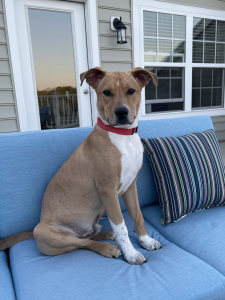
Tell us about Ulysses!
“Ulysses is a sweet, happy-go-lucky hound mix who adores everyone he meets. He followed me everywhere around the house and yard, loving every bit of attention. As a young dog, he enjoyed the large yard and regular exercise we were able to provide. He also loves to snuggle at the end of the day in bed. He was perfect for watching movies with!”
What was your favorite part about fostering?
“My favorite part of fostering is definitely the bond we create with the animals. They truly appreciate us giving them good food, water, and a soft place to rest their heads. I also really enjoy training them with lots of good treats. Ulysses especially loved when I’d train him using peanut butter as the reward!”
What was your least favorite part?
“My least favorite part is probably the goodbye. You get attached to foster animals, so it is bittersweet when they go to a good home. But, I would definitely foster again! I plan to, for both cats and dogs.”
Is there anything else you would want potential fosters to know?
“One thing I’d want fosters to know is that it takes time for [an animal] to become acclimated in their home. They may cry at night or be shy for the first few days or even weeks. It takes patience to help them adjust to a new lifestyle, but it is so rewarding.”
It is because of Sarah that Ulysses got a happy ending and was adopted! The Humane Society of Loudoun County does not have a facility to house animals and solely relies on its network of caring fosters. If you are thinking of becoming a foster with HSLC or have questions about fostering, you can use this link: https://humaneloudoun.org/programs/foster/ or email foster@humaneloudoun.org.

By Hannah Feeley
I recently had the pleasure of speaking with three fosters for the Humane Society of Loudoun County (HSLC). They each shared their stories and advice for new foster parents.
Meet Tyler
Tyler and his roommate, Katie, started fostering during the pandemic and have fostered 14 cats thus far with HSLC. They initially started fostering to cope with COVID-19 pandemic isolation and the emotional toll but continue to foster because it’s meaningful and fun.
Tyler mentioned the potential financial toll of fostering. Although HSLC covers all vet care expenses, it relies on the community to donate food and supplies. Otherwise, the fosters cover these costs which can add up. But Tyler and Katie have felt that the costs are worth it.
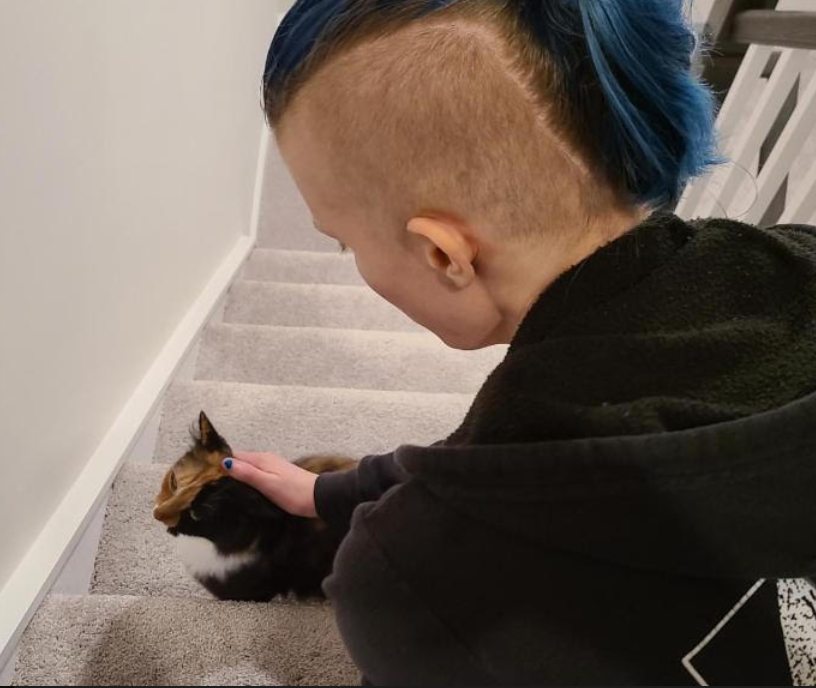
Despite both working full-time, Tyler and Katie still find time to play with and socialize the cats to get them ready for their forever homes. Katie, for instance, sets aside arts and crafts time with the cats.
Tyler recommends that new foster parents reach out to their animal rescue for advice. He highlighted that our HSLC family has given him great guidance with each animal.
Meet Jamie
Jamie and her two daughters recently became short-term fosters for HSLC. She is a homeschool parent, with two senior dogs.
Jamie was volunteering for HSLC as a cat condo caretaker at a local pet store. When the cats in the condos needed a break, her kids encouraged her to take the cats home. Both Jamie and her kids noted the incredible feeling of letting the cats decompress for a few days. Plus, they found the experience to be really fun.
Jamie emphasized that cats do not need a lot of space; whatever room you can provide may actually be more than they’re used to. She appreciates the flexibility of short-term fostering as it allows her to help the animals without making a lengthier commitment.
With the holiday season upon us, HSLC is currently in need of short-term and vacation fosters. So, if you’re considering fostering, this would be the perfect time to give it a try.
Meet Carol
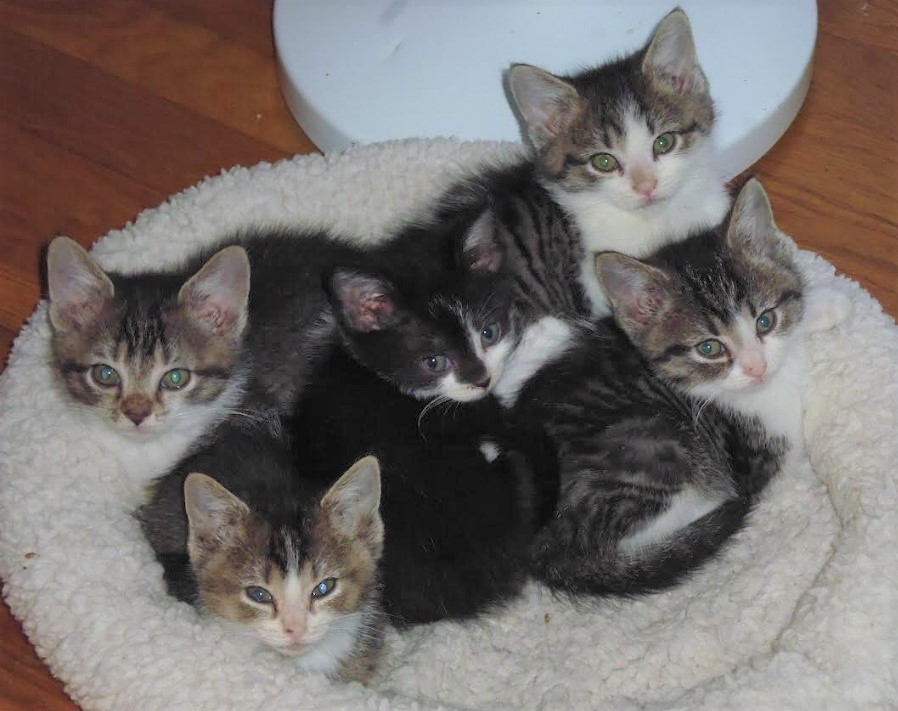
Carol is retired and has fostered cats with HSLC since 2018. Carol was initially introduced to fostering by a friend and hasn’t looked back since.
In explaining to me why she fosters, the joy in Carol’s voice was evident. – she does it because it’s enjoyable. Carol has also made (human) friends by fostering. Each time a foster cat is adopted, she makes a new friend with the adopter who sends updates about the cat’s wellbeing.
As a long-term foster parent who often takes in mistreated animals, Carol’s advice for new fosters is short and sweet: be patient. Spend time with the animals but have the patience to allow them to come out of their shells on their own.
Some people fear they won’t be able to give up the foster animals when the time comes. But Carol’s mindset is different: the more animals she can foster, the more animals she can help find homes. It’s a beautiful process and Carol is enthusiastic about her next foster.
If you’re interested in becoming a short or longer term foster, please contact us at foster@humaneloudoun.org or complete a no-obligation online application.

By Uchenna C. Okeke
When it comes to our homes, safety is paramount. However, for pets, the definition of safety can be vastly different. What may seem harmless to humans can pose significant risks to companion animals. Pet-proofing is essential to ensure your home is a haven, not a hazard. Here are steps to pet-proofing your home.
STEP 1- Understanding Your Pet’s World
The first step is to observe your pet’s behavior and habits to anticipate potential risks. Pets use their senses to discover hidden dangers. For example, Anne Senft, HSLC Board President, fostered a blind cat that relied on memory and touch to navigate. “We were told not to move any furniture because he would ‘map’ out the basement like a robot vacuum,” she relates. This experience shows the importance of consistency in your pet’s environment.
Before bringing a pet home or making changes to their environment, identify areas where curiosity and instinct may lead them astray. Consider the factors that drive their actions, including their natural instincts to sniff, chew and investigate, and physical abilities that enable them to climb and jump.

STEP 2- Room-by-Room Checklist
Conduct a thorough examination of each room to remove hazards and ensure safety.
- Living Room: Secure wires and cords, move toxic plants out of reach, and anchor heavy furniture to prevent tipping.
- Kitchen: Store food and cleaning supplies safely, block access to countertops and appliances and clean up crumbs and spills promptly.
- Bathroom: Keep toilet paper and towels out of reach, secure bathroom trash cans, and store medications and cosmetics safely.
- Bedrooms: Organize shoes and clothing, store electrical cords and devices and block access to closets and drawers.
STEP 3- Identify Hidden Dangers
Hidden dangers are often-overlooked areas that can pose significant risks to your pet’s safety. These include:
- Electrical outlets
- Toxic substances
- Choking hazards
- Fall risks

STEP 4- Assess Pet-Specific Needs
Consider your pet’s unique characteristics, such as age, size, breed, and abilities, to tailor your pet-proofing strategy. For example:
- As noted above, blind pets require consistent furniture arrangements to help them navigate through memory and touch.
- Senior pets need easy access to essentials like food, water, litter, and favorite resting spots to accommodate their reduced mobility and potential health issues.
- Puppies need to have secure environments, including blocked off areas and secured toxic substances which will help to protect their curiosity-driven nature and rapid growth.
- Small pets require secure enclosures and protected electrical wires to prevent escape and electrical shock.
- Large pets need reinforced furniture and secured heavy objects to prevent accidents and damage.
- Pets with medical conditions may need adaptations to accommodate specific health needs, such as easy-to-clean surfaces for pets with allergies.
STEP 5- Creating a Pet-Friendly Home
Creating a pet-friendly environment enhances overall well-being. Consider:
- Designating pet zones for rest and relaxation. Create cozy areas where your pet can retreat for calm and rejuvenation. This helps reduce stress and provides a sense of security.
- Choosing durable, easy-to-clean surfaces. Select durable, easy-to-clean surfaces. Hardwood, tile, waterproof furniture, and washable walls make cleaning easy, keeping your home and pet healthy.
- Supervising and interacting with your pet. Spend quality time with your pet through play, exercise, and mental stimulation. This strengthens your bond, promoting a happy and healthy pet.
Remember pet-proofing is not just about removing dangers; it is also about creating an environment that promotes well-being. Ensure your furry friends’ safety and well-being today!
Ready to take the next steps? Visit the Humane Society of Loudon County (HSLC) to check out available animals for adoption and access valuable resources and tips.

By Kathleen Silver
(Updated 2024)
So far this year, the Humane Society of Loudoun County (HSLC) has adopted out nearly 150 dogs and cats and trapped over 115 community cats to have them fixed, vaccinated and chipped. This life-saving work is only made possible thanks to the support of caring individuals like you!
HSLC is an all-volunteer, non-profit organization committed to rescuing and caring for as many homeless and at-risk animals as possible. But, since each foster animal in our care costs an average of $1,000*, we are limited to the number of animals we can take in. Most of our donations are applied to veterinary costs to prepare an animal for their forever home.
Your Donations in Action
Did you know that with a donation of only $25, we can treat an animal for fleas and deworm her? A $50 gift will provide needed vaccinations or pet food kits for five struggling families.

Perhaps you’ve been following a particular companion animal we are helping but cannot adopt yourself. HSLC also has a Guardian Angel program that allows you to sponsor that animal’s adoption fee ($150 for a cat and $300 for a dog), increasing their chances of being adopted. Adoption sponsorships help to defray the cost of care while an animal is in our foster network. And, if you don’t have your heart set on a particular animal, HSLC can easily choose a pet for you that needs the most help.
HSLC is a foster-based animal rescue that does not operate a shelter and therefore does not incur the expenses associated with running a facility.
Animals are Counting on You
With economic conditions being difficult this year, we know that money might be tighter than normal. But the calls to help our furry friends never stop. You can assist us in getting the push we need to help more animals in the new year.
There are many ways you can donate to HSLC. You can make a one-time donation or start a monthly donation online. Note that you can make your gift in honor or memory of a loved one. Or you can donate from your donor-advised fund — an increasingly popular way to express your support for the causes that mean most to you. Thank you for making a life-saving difference!
You may also like 4 Tax-Savvy Ways to Support HSLC Before Year-End.
*2022 figure; reflects discounts from our wonderful vet partners

By Uchenna C. Okeke
Are you feeling stuck in a routine? Want to add some excitement to your daily life? As the saying goes, “variety is the spice of life,” and what better way to mix things up than with a furry friend by your side? Whether you’re a seasoned pet owner or considering bringing home your first companion, adopting a pet can transform your life in amazing ways. From cuddly moments on the couch to adventurous walks around the block, pets have a way of making every day brighter.
Adopting a pet can bring excitement, joy, and a fresh perspective to your life. So, if you’re ready to liven things up, let’s dive in!
Social Life
Adopting a pet can significantly spice up your social life. By frequenting pet-friendly venues such as dog parks, attending outdoor festivals, and joining pet owner groups, you’ll meet like-minded people who share your passion for animals. These social interactions can lead to lasting friendships, a sense of belonging, and a more vibrant social life. Just be sure to start slow, and ensure that your companion animal feels comfortable in these different settings.
Emotional Wellbeing
Pet adoption can greatly impact emotional wellbeing. As a pet owner, you can experience love and affection from your new companion, which can boost self-esteem and confidence. Pet therapy also reduces stress and anxiety, promoting relaxation and calmness. Moreover, caring for a pet develops emotional intelligence and empathy which are essential life skills. By forming a deep bond with your pet, you’ll discover a sense of companionship and emotional support.

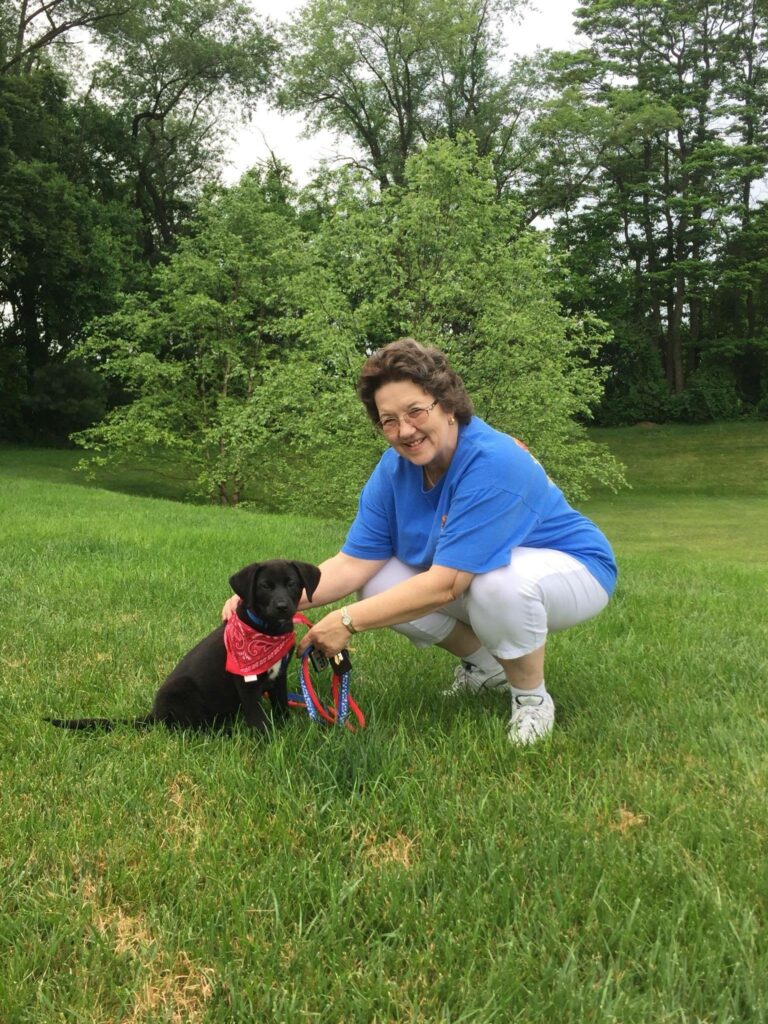
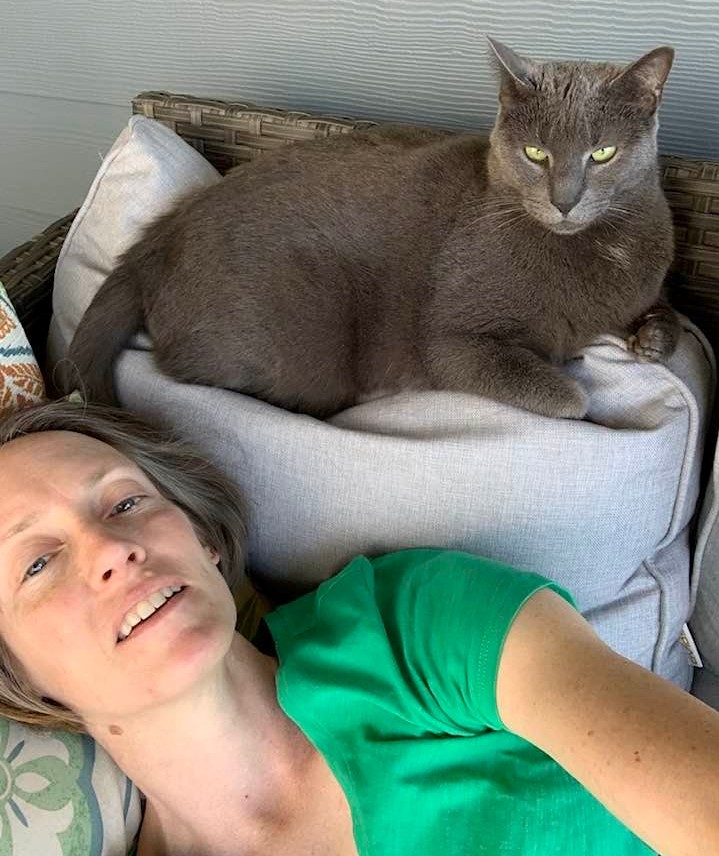
Lifestyle Changes
Adopting a pet may introduce exciting lifestyle changes. You might explore new outdoor activities, such as hiking, walking, or jogging with your furry friend. Discovering pet-friendly travel destinations opens up new vacation possibilities. Furthermore, caring for a pet creates a sense of purpose and responsibility, adding structure and meaning to your daily routine. Your pet will encourage you to lead a more active, engaged, and fulfilling life.
Personal Growth
Pet adoption fosters remarkable personal growth. Developing patience and compassion through pet care helps you become a more empathetic person. Learning about animal behavior may enhance your understanding of wildlife and nature. Moreover, the experience improves self-esteem and confidence, as you find fulfilment in the responsibilities and joys of pet parenthood.
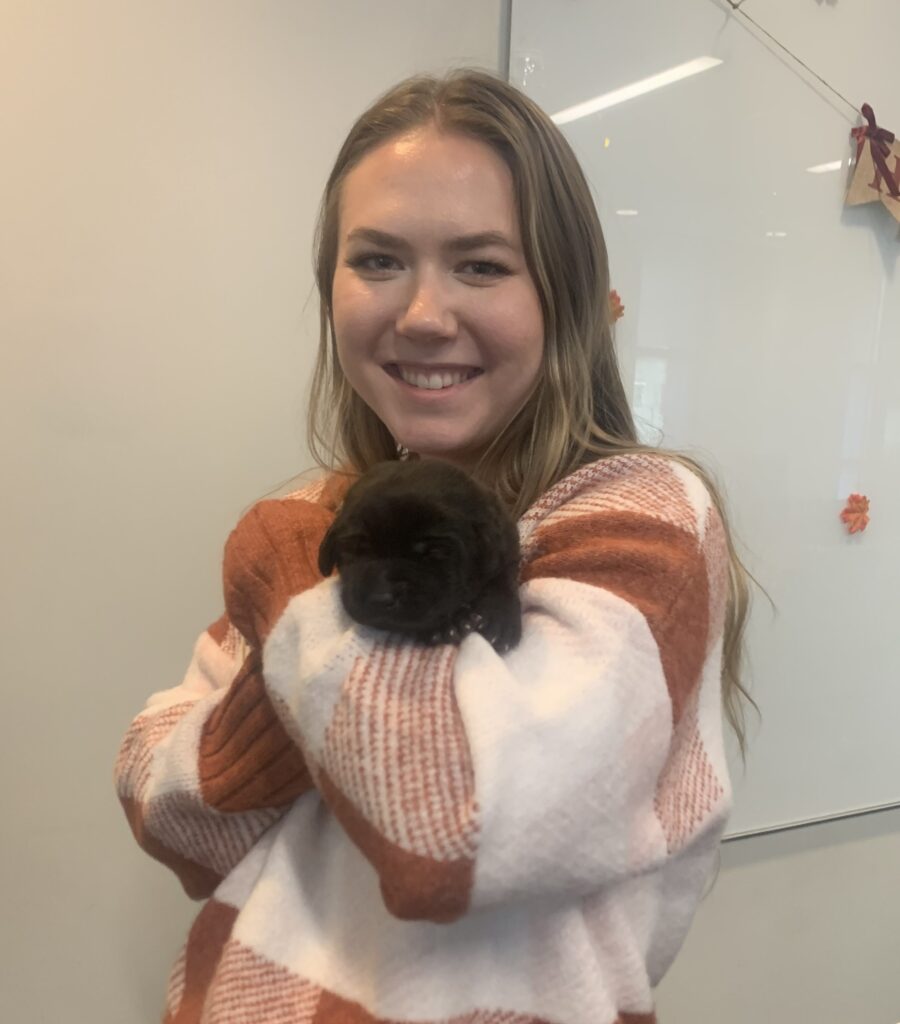
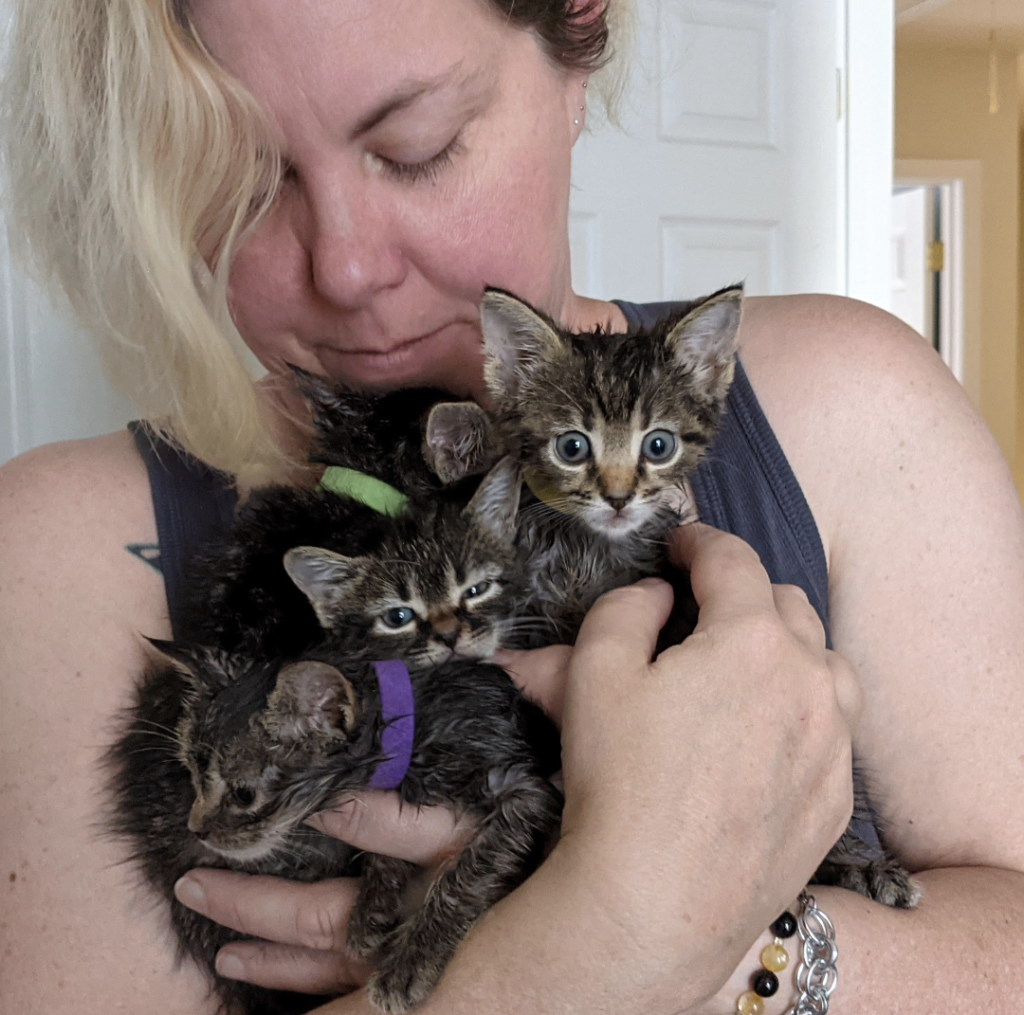
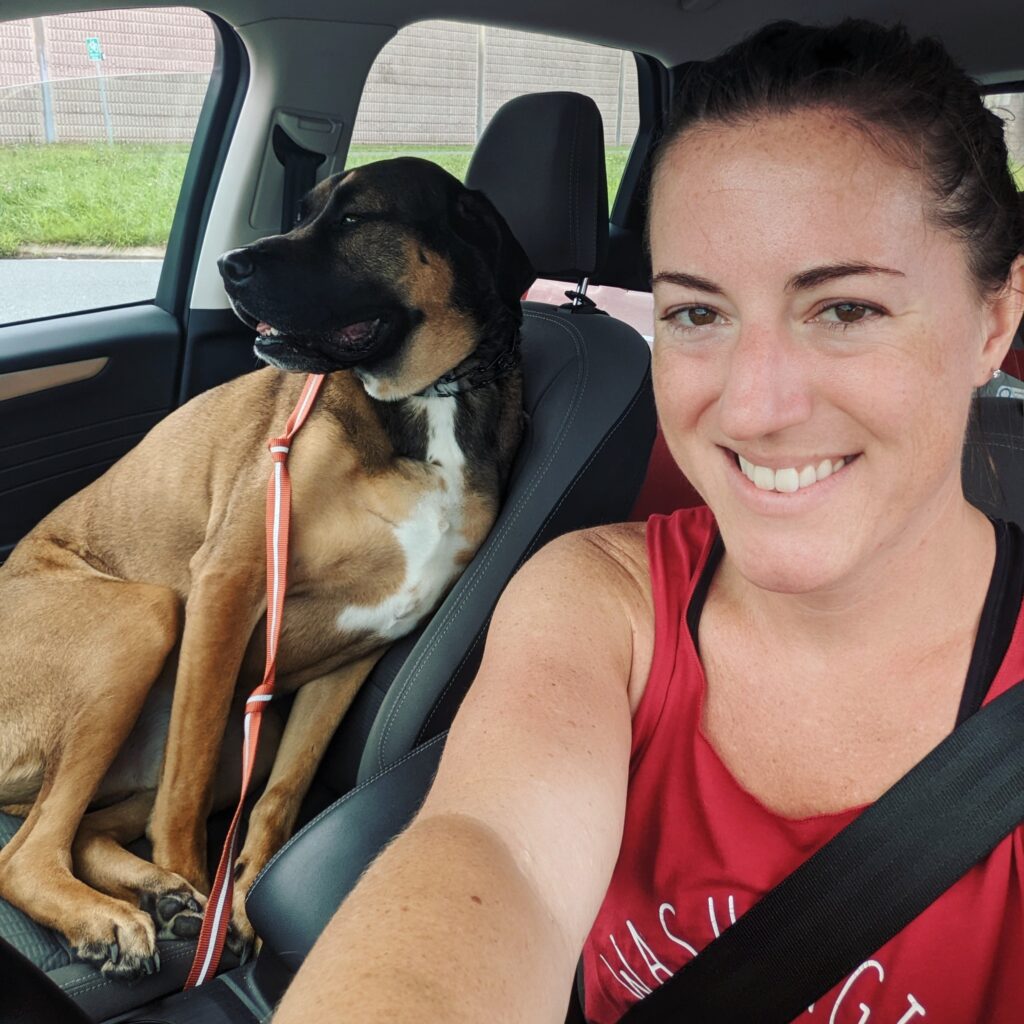
Surprises and Laughter
Pet ownership is full of delightful surprises and laughter. Witnessing hilarious pet antics, from playful mishaps to adorable quirks, brings endless entertainment. You can experience unexpected moments of joy, like spontaneous cuddles or mischievous moves. By capturing these heart-warming times through photos and videos, you’ll create lasting memories that become a treasured hobby. These sweet moments enrich your life, filling it with happiness and contentment.
Health Benefits
The health benefits of pet adoption are numerous. Studies show that pet owners have lower blood pressure and cholesterol levels. New pet owners often find themselves losing weight due to the increased physical activity that comes with caring for a new active pet, leading to fitness. Moreover, improved mental health and wellbeing stem from the emotional support and companionship your pet provides.
Conclusion
Pet adoption offers countless benefits, from improved mental and physical health to social connections and emotional growth. By welcoming a furry friend into your life, you’ll experience unconditional love, companionship, and joy. Pet adoption not only changes the life of the animal but also yours. It is a life-enriching experience that brings laughter, excitement, and purpose. So, adopt a pet, spice up your life, and discover a lifelong companion!
Ready to spice up your life through pet adoption? Explore our available adult animals for adoption and let HSLC’s dedicated team help you find the right animal.
Photos: HSLC’s Community Engagement Committee
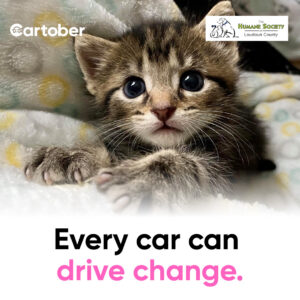
By Lauren Puckett
Dr. Christine Rainwater drove her 14-year-old Honda Civic for 240,000 miles before deciding it was time to throw in the towel. As a dog owner and lover, Christine made the choice to donate her vehicle through CARS (Charitable Adult Rides & Services) to benefit the Humane Society of Loudoun County (HSLC).
Now CARS is launching its second annual Cartober campaign. As the name suggests, Cartober is an initiative that promotes vehicle donations for nonprofit organizations throughout the month of October. Donated vehicles are sold through used car markets to provide crucial funding for nonprofits all over the world. All vehicle types are accepted, running or not, and include cars, trucks, trailers, boats, RVs, motorcycles, campers, off-road vehicles, planes, heavy equipment, and farm machinery.
For Christine, donating her vehicle to save animals was an easy decision.
“I would love to adopt more – but the challenge is space (only so much room on the bed). And those pesky family and friends would question my sanity,” she said. “Since I can’t/shouldn’t adopt any more until there is room, I feel strongly about helping through the donation of my vehicle. Could I have sold the car? Yes, because it was in good working order with two new tires. But why go through the hassle when such a great organization with such a great mission could benefit?”
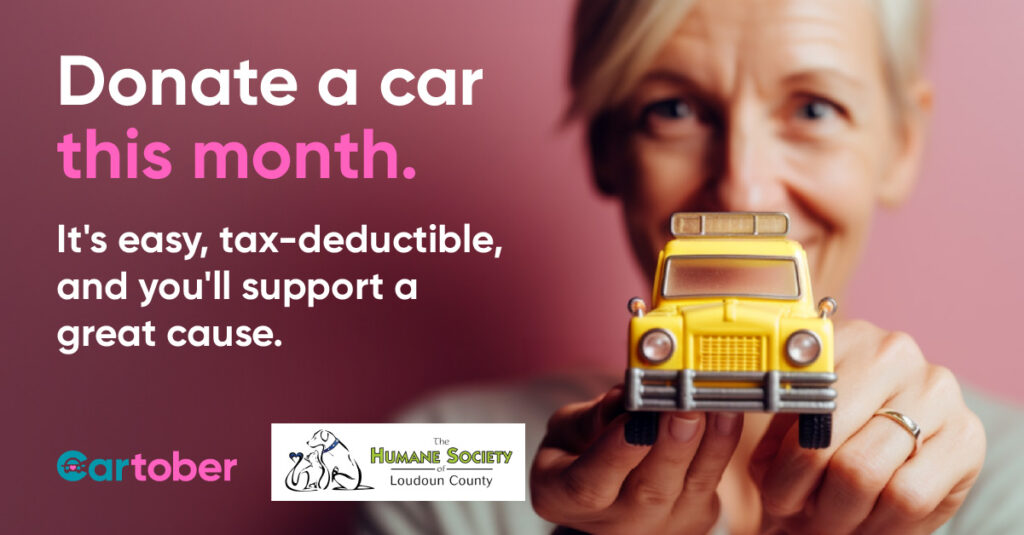
It’s easy to donate through Cartober. Simply fill out an online form, schedule a free and convenient car pick-up (usually within 24-72 hours), and receive a donation receipt. That’s it!
Interested in donating your vehicle to support HSLC? Find more information here.
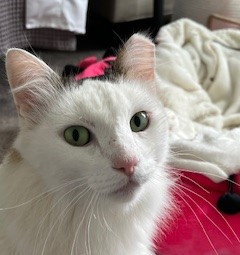
In the heart of South Riding, an adventurous cat named Fluffy illustrates the lengths we go to for our furry friends.
Fluffy wasn’t just a cat; he was a beloved member of the neighborhood. Linda and Scott, his devoted caregivers, had worked diligently to earn his trust over the years. They began their journey back in 2019 when Linda first contacted the Humane Society of Loudoun County (HSLC) for TNR assistance with community cats. Fluffy, one of the many cats they fed, eventually became a regular visitor in their home, enjoying meals, grooming sessions, and the warmth of their hospitality.
But as life often does, change was on the horizon. In June 2024, the couple planned a move to North Carolina, and naturally, they wanted Fluffy to come with them. However, Fluffy had other ideas. When it was time to move, he vanished.
The Search for Fluffy
Desperate to find their beloved companion, Linda reached out to HSLC for help. She was worried—despite keeping in touch with the new homeowners, there had been no sightings of Fluffy.
Tracy, HSLC’s Director of Animal Operations noted, “Once I reached out to rookie trapper extraordinaire Sara Sweet, she jumped into action, posting flyers and setting up a feeding station at Fluffy’s old house.”
Thanks to the collective efforts of the neighbors, Fluffy’s whereabouts began to emerge. Community members reported sightings, and Sara meticulously tracked Fluffy’s movements, even noting his daring crossings of a busy four-lane road.
After three and a half long months of searching, Sara finally established a consistent feeding routine that led her to successfully trap Fluffy late one night. His savvy nature made it challenging, but with patience and perseverance, Fluffy was finally caught.
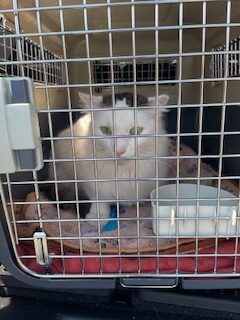

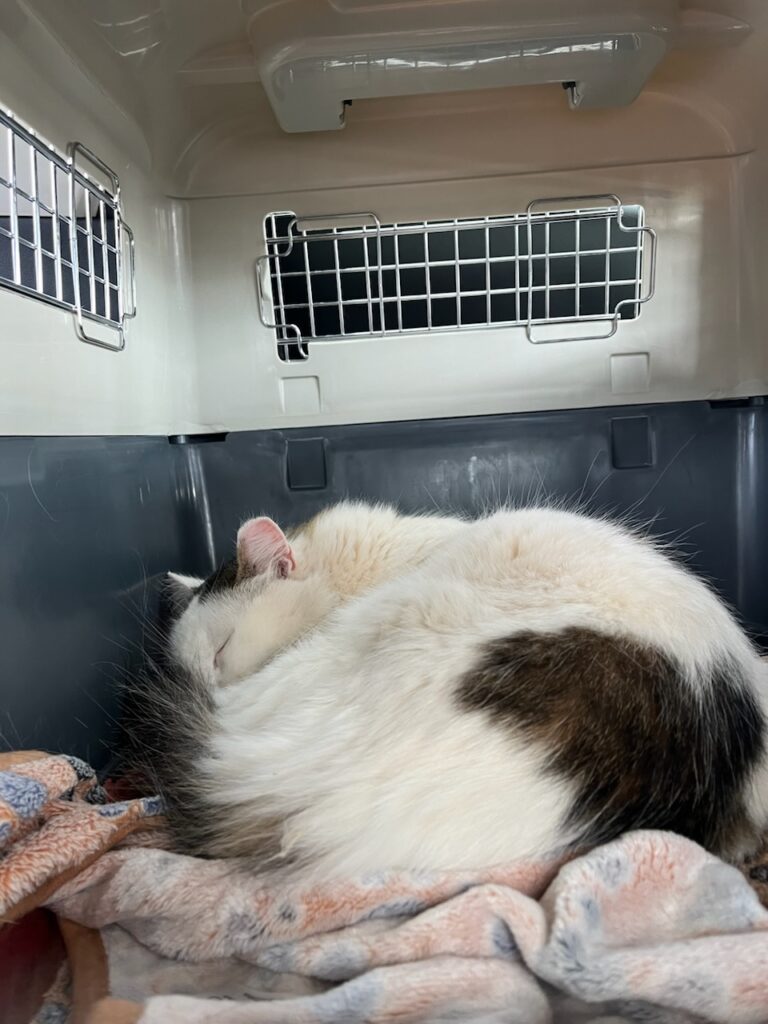
A Happy Reunion
The joy didn’t end there. Thanks to Fluffy’s microchip, HSLC confirmed his identity and retrieved his medical records, ensuring he would receive the care he needed upon his return home. Linda and Scott wasted no time; they made the 9-hour round trip all in one day from North Carolina to pick him up (see photos above). When they reunited, it was a moment filled with love, relief, and happiness. Fluffy was back where he belonged—home (see photos below).
Linda expressed her gratitude, saying, “Thank you so much for everything you have done for Fluffy and us. I honestly didn’t think we would ever see him again, but thanks to you, he is home and will always be treated like royalty. Our cats rule us!”
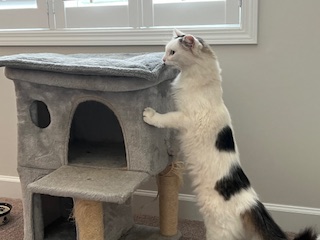
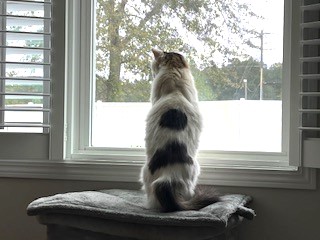

Fluffy’s story is a testament to the power of community support and the importance of microchipping pets. It also highlights the crucial role of dedicated trappers, like Sara, who take the initiative to help lost animals find their way home.
“I haven’t been trapping very long but the elusive Fluffy has definitely been the most challenging to date,” acknolwedges Sara. “I had a ton of help and support from the South Riding community neighbors. We are so happy Fluffy has finally been reunited with his family!”
If you are interested in becoming a trapper, please reach out to tnr@humaneloudoun.org or complete a volunteer application online. Training and support is available.

By Lauren Puckett
On average, cats spend 55 days in shelters before they’re adopted. That’s according to a 2020 study published in the Journal of Applied Animal Welfare Science. The study showed that socialization levels and age had an effect on each cat’s length of stay.
Adult cats and dogs, and especially seniors, and other animals perceived to be less desirable are the focus of Adopt a Less Adoptable Pet Week. Celebrated the third week of September, the week shines a light on animals that remain in foster care or shelters longer than they should.
“Less adoptable” pets may include those that are older, have special needs, and even look or behave a certain way. In the study mentioned above, for each additional year of age, it took cats an average of 3.7 more days to get adopted. Behavior also affected length of stay. Interactive cats stayed an average of 36.9 days, while approachable and unapproachable cats took 50.8 days and 118.7 days on average, respectively.
But, factors like age and even initial behavior don’t necessarily matter in the long run.
6 Reasons to Adopt a “Less Adoptable” Pet
That pet might already be trained: Less adoptable pets are often older, which means they are more likely to be housebroken and understand common training cues than puppies or kittens.
An older pet shows its true personality: Adoption applicants are often looking to adopt a kitten – but a kitten’s personality isn’t established until it reaches maturity.

Your lifestyle might be a match: Less adoptable pets often have special needs – and those needs could be a fit for your lifestyle. Maybe you live alone and have the time to devote to a pet with medical needs. Or maybe you have a big family who can take on a high-energy animal. There are lots of possibilities for perfect-match situations.
That pet has lots of love to give: The longer an animal spends in a shelter or foster home, the more grateful they’ll be when they do find a loving home.
That pet needs a loving home: Less adoptable pets have likely been at animal shelters or in foster homes for a long time. At the same time, they have often had difficult pasts, and are more in need of a loving home than many.
You can help other animals: Shelter overcrowding is a real problem, and foster homes can be hard to come by. By adopting a less adoptable pet, you’re freeing up space and resources and helping other animals in the process.
So this week, let’s celebrate those less adoptable pets. And when you’re ready to bring a new pet into your life, consider adopting that senior dog or cat, or the one with special needs. Because that “less adoptable” animal may just become your best friend!
Looking to be the hero in an overlooked animal’s life? Check out our adoptable animals.
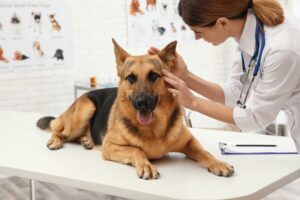
By Lauren Puckett
Pet insurance may seem unnecessary to many caregivers. It’s one more monthly cost that you don’t need, right? But for guardians of pets with major health issues, pet insurance may be worthwhile and provide some peace of mind. The catch is that you don’t know if or when your pet may experience a health problem – and you need to have your insurance in place before they do or that problem likely won’t be covered.
To help you decide whether pet insurance is right for you, let’s look at the essentials:
1 – Not every insurance company or plan is the same
You’ll want to research different pet insurance companies and the plans they offer. A good place to start is each company’s website. Most of them will allow you to get a free pet insurance quote if you don’t mind the promotional email you will then receive. Consider these questions:
- How extensive is the coverage? Does it cover chronic conditions? Genetic conditions? Accident and illness? Pre-existing conditions?
- Is there an option to cover wellness/preventive care like vaccinations?
- What is the monthly premium and can it be customized to meet your budget?
- What is the annual limit (the total amount you can get reimbursed in one year)?
- What is the deductible (the amount you need to pay before you get reimbursed)?
- What is the reimbursement percentage (how much the insurance company will pay you)?
2 – Many plans do not cover pre-existing issues
It’s best to sign your pet up for insurance either before or shortly after you bring them home. This is because most plans will not cover pre-existing issues (anything that arose prior to your pet being enrolled in pet insurance).
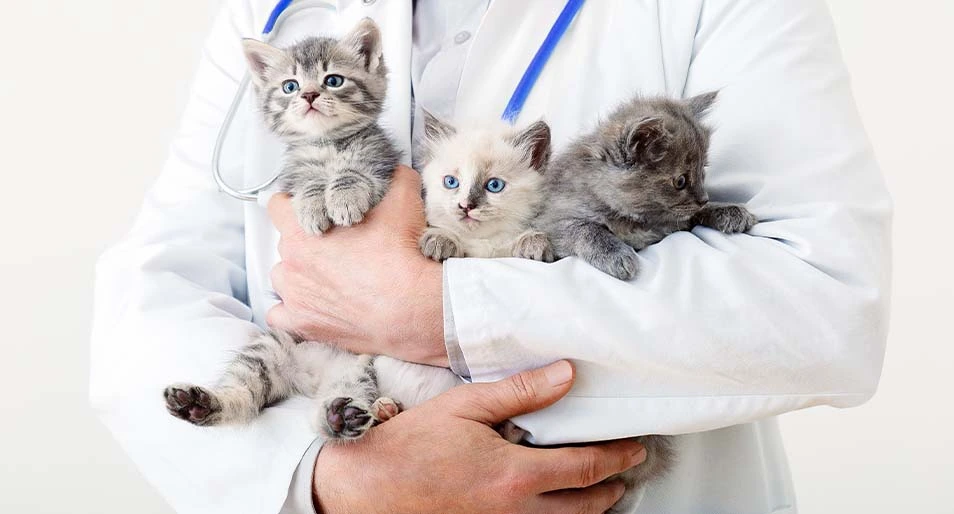
3 – There is often a waiting period
This is the window between when you sign up and when you can submit your first claim. Keep this in mind when you’re bringing a new pet into your life. As mentioned above, you may need to enroll in pet insurance before you get your pet. The duration of the waiting period will vary by insurance company. Waiting periods for illnesses are typically 14-30 days, while waiting periods for accidents are 1-15 days.
4 – Claims are paid after the fact
Most pet insurance does not function like health insurance for people, where the insurance company pays the doctor directly. In most cases, you pay your veterinary bill in full and then submit your pet insurance claim. Once the claim is approved, your insurance will reimburse you via check or direct deposit.
Keep in mind that most plans do not reimburse 100 percent of the vet bill, even when it is fully approved; they have pre-set reimbursement percentages for each health condition. This is something you’ll want to look at as you are deciding which insurance plan to go with.
5 – You can visit any veterinarian
There is no “in network” or “out of network” with pet insurance. You can visit any licensed veterinarian, including specialists and emergency clinics.
Sources:
https://www.marketwatch.com/guides/pet-insurance/pet-insurance-with-no-waiting-period
https://www.aspcapetinsurance.com/resources/pet-insurance-beginners-guide

Every year, the Clear the Shelters campaign lights up the nation, creating a powerful wave of compassion and action for our furry friends. Running from August 10 to September 10, this year’s campaign was no different, bringing a surge of support and a renewed focus on pet adoption and donations. Since its inception in 2015, Clear the Shelters has been a beacon of hope, helping more than 1 million pets find their forever homes.
The Humane Society of Loudoun County (HSLC) proudly joined the nationwide effort, participating in multiple adoption events throughout the campaign. Thanks to the generosity of our donors, we were able to offer special incentives to encourage adoptions. Adult cats and dogs had their adoption fees waived, while a special “BOGO” deal was available to help bonded kitten pairs find homes together.
Among the many uplifting adoption stories, one stands out as a shining example of the campaign’s success. At the CatVideoFest event hosted at the Alamo Drafthouse in Ashburn, a potential adopter came to meet three remaining kittens from the Kittenpalooza litter. He was so moved by the trio’s bond that he decided not to separate them. In a rare and heartwarming decision, he adopted all three kittens together. It’s moments like these that make the hard work and dedication surrounding adoption efforts so rewarding.
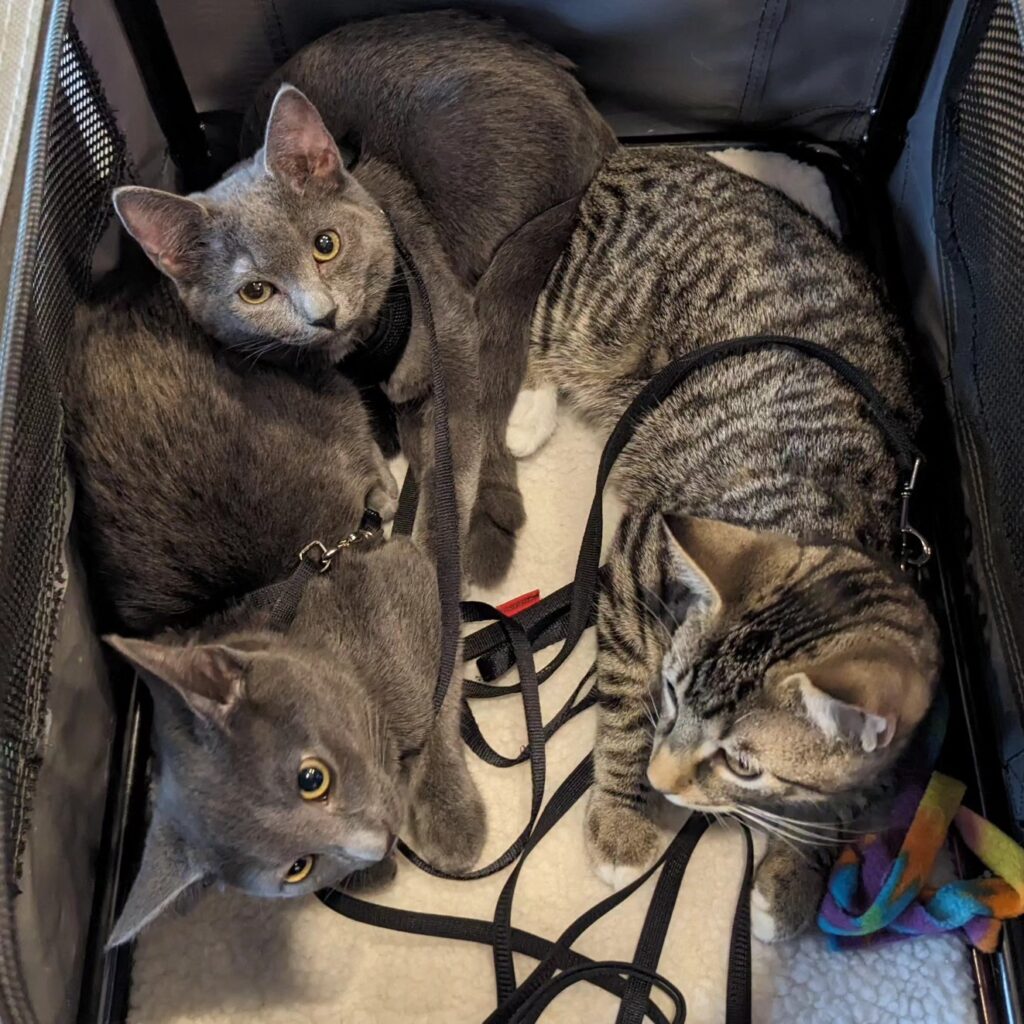
In total, HSLC successfully placed 22 animals into loving homes during the campaign. Each adoption story is a testament to the power of community support and the difference it can make in the lives of the littlest among us.
A huge thank you to everyone who supported the campaign, whether through donations, volunteering, or adopting. Your contributions are making a lasting impact on the lives of so many pets and their new families. Here’s to many more happy endings and the continued success of Clear the Shelters!

By Liz Bresnahan
If you are an animal lover, you know that a pet’s love is priceless. Life’s simple moments are that much sweeter. Maybe it is your cat’s calm purr as she keeps you company while reading or your dog’s excitement on walks that makes a routine stroll around the neighborhood anything but mundane. Pets provide so much joy and many consider them an integral part of the family.
If you are thinking about adopting a pet, the Humane Society of Loudoun County (HSLC) encourages you to consider an adult animal. While you ultimately have to do what is best for your household, many families who have adopted an adult dog or cat are so glad they did. Here are a couple of points to think about if you are considering adopting an older companion animal.
Time: Quality over quantity
Adopting an adult dog or cat may mean that you do not have as many years to spend with them as you would a puppy or kitten. However, the time you do have will be that much more cherished. In certain cases, rescued animals may not have had an ideal life. However, because HSLC animals are placed in safe and loving foster homes prior to adoption, they can start to heal from their past, if needed. Once adopted, you have the unique privilege of watching your pet continue to blossom into a more happy, trusting, and confident companion. And because you are helping your dog or cat rewrite their story, you can often expect them to show you unconditional love and loyalty in return.
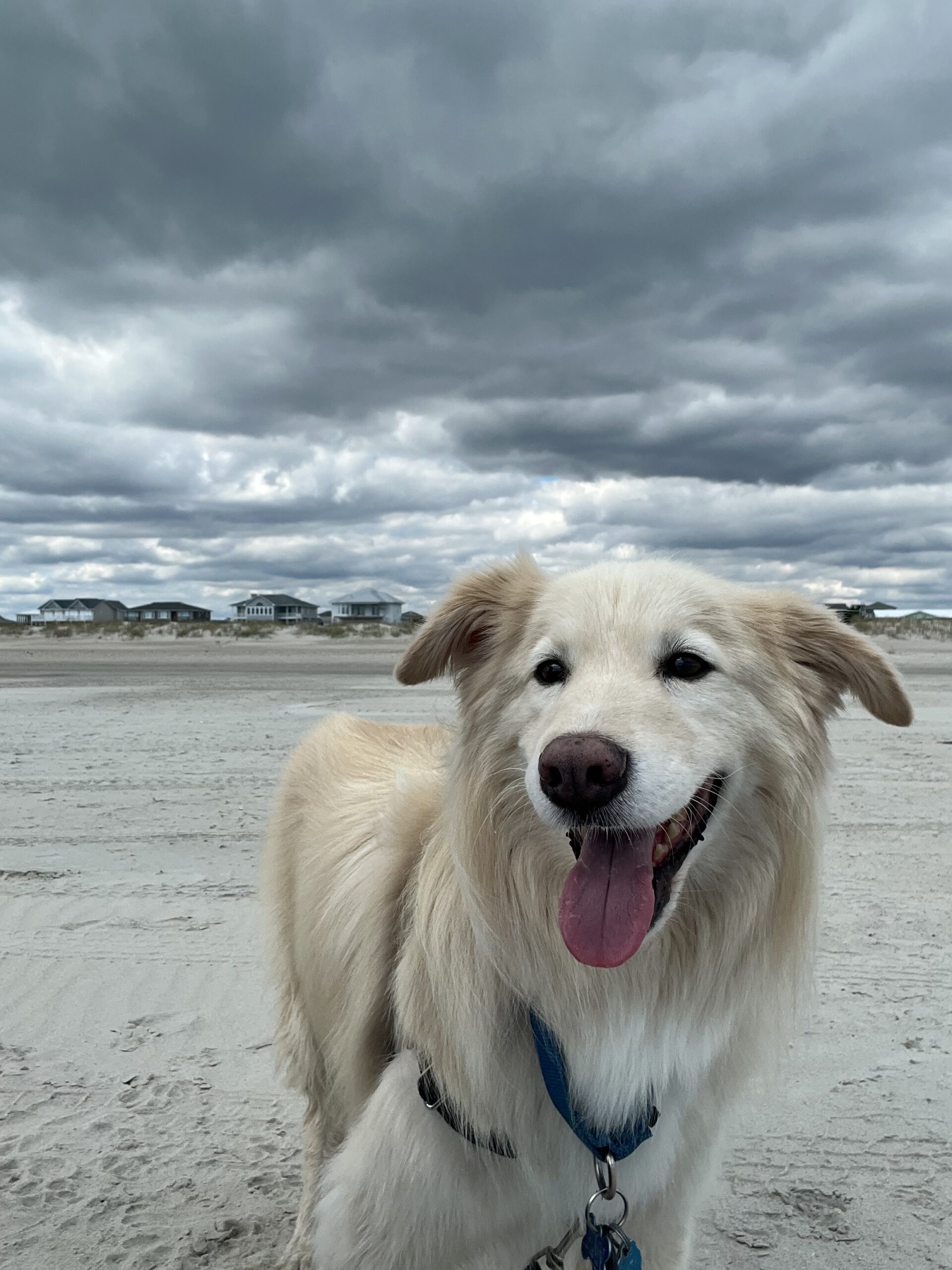
Training: Basics are covered
Adult dogs and cats are usually potty-trained which is definitely a point in their favor. Many adoptable dogs will also know basic commands. But, if a dog needs additional training, know that you may be able to teach an old dog new tricks if you are dedicated to working closely with them. And, when you are successful, it will be so rewarding that you have directly supported the growth and development of your furry companion.
Temperament: No surprises
One of the biggest benefits of adopting an adult animal is that you know what you’re getting. You don’t have to wonder how big they will get or how their personalities will turn out. And, with adults, you are often getting an animal with a calmer temperament. For this reason, adults can be great starter pets for families with children.
Ready to adopt? Check out the wonderful adult animals that are available for adoption right now. Rest assured, HSLC will work with you to find the right animal to fit your household and lifestyle.

By Kailyn Carr
When it comes to things we like or love, we tend to live by the philosophy that if one is good, two is even better. Why stop at one piece of chocolate when you could have two? Same goes for cats. What could possibly be better than two best friends instead of one? Though adopting in pairs may not be for everyone, the pros—including twice the love—often outweigh the cons.
Benefits of Adopting in Pairs
Starting with kittens (we’ll get to adults in a moment), here are seven ways fur-babies benefit from a twosome according to the Kitten Lady, Hannah Shaw.
- Learn by Observation – Kittens learn by observation and will more quickly pick up skills like using the litter box or grooming if they have another kitten or cat to teach them.
- Focus Play Aggression – Having a friend means they can take out their play aggression on one another (instead of on you.) They’ll also teach each other good boundaries about biting and scratching.
- Entertain & Enrich – When your kitten has a buddy, they’ll always be entertained, active, and enriched. And a happy cat makes a happy home!
- Keep Out of Trouble – One mischievous kitten can be destructive if left alone, but two kittens tend to keep each other occupied and out of trouble.
- Easier Intro to Adult Cat – If you have an adult cat at home, two new kittens may be easier to introduce into your family than one. While one kitten may nag an older cat, two kittens will keep each other company while the older cat watches from a distance.
- Comfort in Friendship – Having a pal will help your kitten settle into a new home. Just like humans, kittens have an easier time feeling comfortable trying something new if they’ve got a friend to do it with them.
- Bonded Pair Adoption – It’s easier to adopt a bonded pair than it is to introduce a new cat later. Adopting a dynamic duo ensures that you’ll have a harmonious home for years to come!
Adopting in pairs also has a positive impact on animal rescue groups like the Humane Society of Loudoun County. By adopting two animals, you free up two slots in a foster home or shelter which allows the rescue to save two more lives.
Bonded Pairs
A bonded pair contains two cats that have a special relationship. While kittens often are bonded early in life with siblings, close relationships between cats can occur at any age. This is due to their natural instinct as social animals to form a pack. These bonds often develop between mother and offspring and even individuals with no familial relationship (true best friends!)
Once a bonded pair is observed, caretakers preserve the relationship by housing the cats together and encouraging an adoption into the same home. Maintaining the bond between two cats is essential. When apart, one or both cats can become stressed, anxious, or even depressed without the other around.

Spotlight on a Purr-fect Pair: Ripley and Winston
One of our pawsome fosters, Kelly, fondly recalls her experiences fostering (and eventually adopting) mama Ripley and her son Winston. Here is what she had to say:
“Winston was always very attached to his mom and we’re so glad we didn’t separate them. They are so funny together–they roughhouse all the time and run around the house chasing each other. It keeps Ripley active as she ages. Plus, if Winston was an only cat, he would constantly be making mischief for us. Having another cat gives him an outlet for his energy. Of course, it’s also comforting to know they have each other when we’re not home. I truly think they’re happier because they always have a buddy.”
If you are interested in adopting one or more cats, visit the Humane Society of Loudoun County’s current clowder of adoptable cats here. Once you find your next family member(s), be sure to complete an application to start the adoption process.
